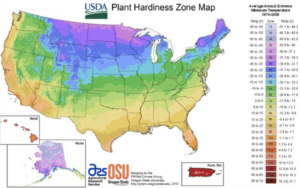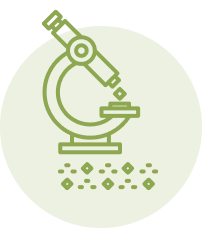Hardiness Zones, also commonly referred to as growing zones, or planting zones, were developed by the U.S. Department of Agriculture as a general guideline to show what climates a plant grows best in.
The continental United States holds eleven zones. The zones are based on the average minimum winter temperature in an area, with zone 1 the coldest and zone 11 the warmest.

How do I use Hardiness Zones?
Hardiness zones are most useful for perennial plants. Tags and labels for perennials typically include a zone range. For instance, zones 5 to 7 or zones 7 to 10. Gardeners have the best chance of success with a new plant by ensuring that it is recommended to be hardy in the zone it is planted in. Planting a plant in a colder zone than its minimum makes it unlikely that the plant will survive the winter.
What is my hardiness zone?
Your particular hardiness zone can be determined by looking at a hardiness zone map, such as the one above, from the USDA, or by utilizing one of the many tools available online.
Use hardiness zones as a general guideline. They are based on average low temperatures, so especially cold winters can plunge temperatures into ranges below what a hardiness zone predicts. In addition, factors like soil type, wind, and consistent snow cover can affect a given plant’s winter survival. By planting in a sheltered location, or growing tender plants in containers and bringing them inside in fall and winter, gardeners can expand the range of options they can successfully grow.




